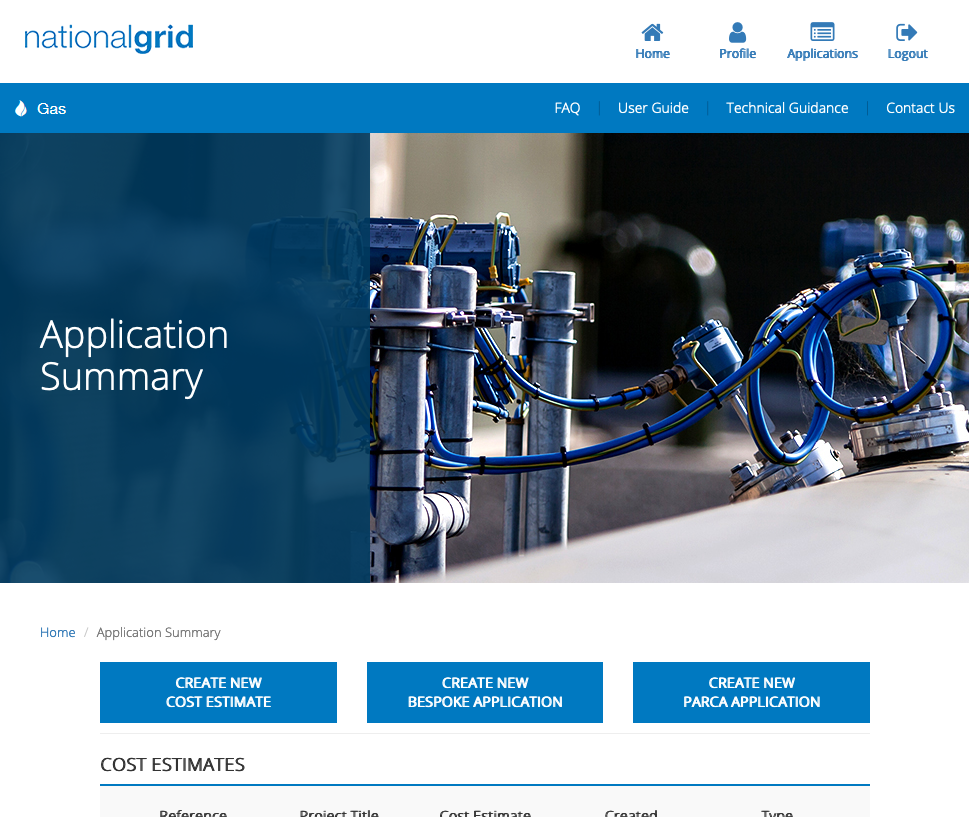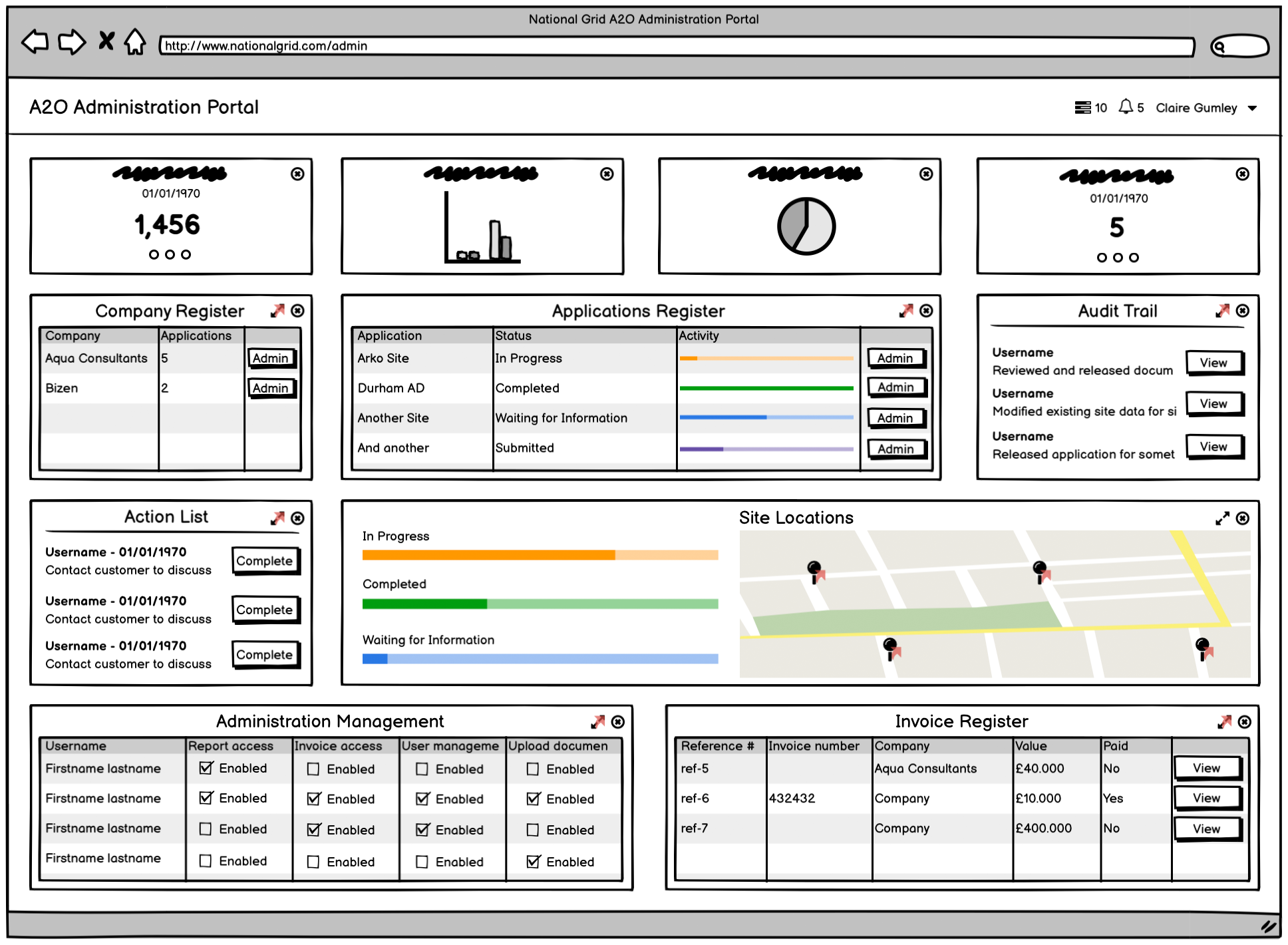National Grid
Customer Gas Connections Portal
Project Background
Project CLoCC (Customer Low Cost Connections) aimed to minimise the cost and time of gas connections to the National Transmission System (NTS), with particular focus on non-traditional NTS gas connections. This would be achieved through fundamentally challenging every aspect of the current connection process, building on worldwide ‘best in class’ technology and practice.
Objectives:
- Reduce the cost of a connection onto the National Transmission System to less than £1M
- Reduce the time it takes from initial enquiry to “gas on” date to less than 1 year
Challenge
Project CLoCC was challenged with developing a new web-based customer connections platform which aimed to improve a customer’s application experience. The project also produced ‘off-the-shelf’ standardised designs for connections that can be used regardless of the customer, size of connection, or type of gas. Both of these work streams were supported by relevant commercial changes.
Key Requirements:
- Allow customers to register on the system in order to make applications
- Allow customers to generate cost estimates and identify sites for potential standard design connections
- Provide a mechanism for customers to track the progress of their applications
- Provide a mechanism for customers to receive and download connection offer documents
Solution
The development of the new gas connections portal was split into two separate sections – a customer facing portal and an internal administration portal.
The customer portal is a public-facing website which allows customers to: register, submit and track requests for new connections to the National Grid gas network; to download cost estimations and design documentation; and to upload contractual and additional information files.
The administration portal is an internal website, available only to National Grid employees, which provides functionality to: manage user accounts; track usage and submissions; progress and respond to applications; and to update the underlying data used by the public portal. The system also emailed notifications to customers and National Grid staff when the status of projects was updated, or new submissions were made.
One of the core principles of the connections platform is collaboration. To ensure that the application process could be supported by all members of a customer organisation, the public-facing portal was designed as a web application with an emphasis on rich client-side functionality. This included interactive mapping views for selecting connection locations, automatic saving of incomplete applications, and background refreshing to update on-screen information.
To support National Grid's internal project team the administration portal was developed to allow for Enterprise Content Management (ECM) with granular role-based access controls. A dashboard design was used to allow for individual panels to asynchronously update without forcing full-page reloads. Integrated document management, digital asset management, and record retention were all delivered using modern web technologies and systems.
Front-end development of the web applications was carried out using AngularJS with back-end API services developed in .NET Core. Microsoft SQL Server was used for the platform’s databases with an emphasis on ultra-fast response times.
CLoCC was developed to run in cloud hosted infrastructure and was chosen by National Grid to run on their then-new Oracle Cloud Infrastructure (OCI) private cloud. To support the availability requirements of the system (99.99% uptime) the software was developed to run in a load-balanced environment utilising Redis as a shared cache.







